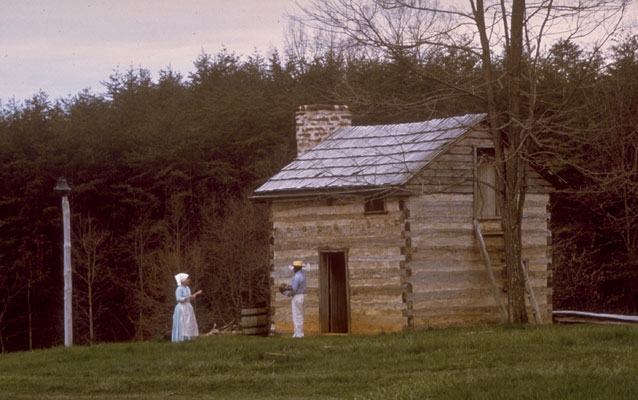Last updated: January 12, 2018
Place
Booker T. Washington National Historic Site

NPS
Booker T. Washington National Monument (BOWA) is located in Franklin County, Virginia. It comprises 223.92 acres located in the rolling hills of the Virginia Piedmont, 22 miles south of Roanoke (map 1). The park contains a visitor center, administrative offices located within a former school building, an 1890s tobacco barn, reconstructed plantation outbuildings, two marked archeological sites, three small cemeteries, and two walking trails that loop through the cabin area, meadows, and woodlands (map 2). Twentieth-century replicas include a slave cabin, smoke house, blacksmith shop, privy, hog pen, duck lot, and chicken house. All replicas are highly conjectural, and their designs derive from anecdotal evidence and general historic precedent. No replica of the main plantation house exists, but stones outline the unconfirmed general location and dimensions of the foundation. Based on recent archeological and ethnographic findings, it appears that the foundation’s dimensions may be inaccurate and the site may not actually be that of the “big house” as formerly believed. In 1856, Booker T. Washington was born into slavery on the site, which was then a small tobacco plantation owned by the Burroughs family. He lived there with his mother, sister and brother until the end of the Civil War in 1865.
After the Civil War, Washington lived and worked in West Virginia, eventually gaining entrance to the Hampton Normal and Agricultural Institute in Virginia, and later at Wayland Seminary. In 1881, he was named the first president of Tuskegee Institute. Tuskegee was to become his life’s work. Washington began with 30 students and met in a church. Over the years he built Tuskegee into a school with an excellent reputation and national recognition. His focus was on making his students self-reliant, but above all, giving them the skills needed to rise out of poverty. He aimed to enable his students to teach other African Americans what they had learned; many of his students became teachers themselves.
